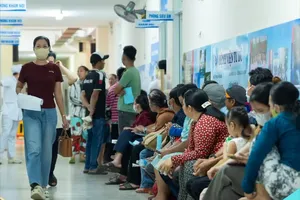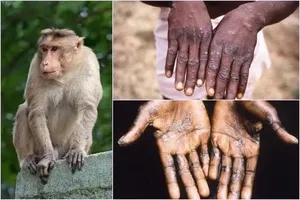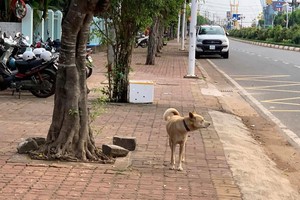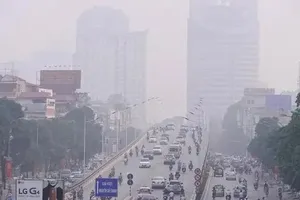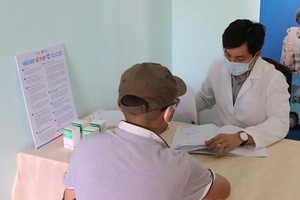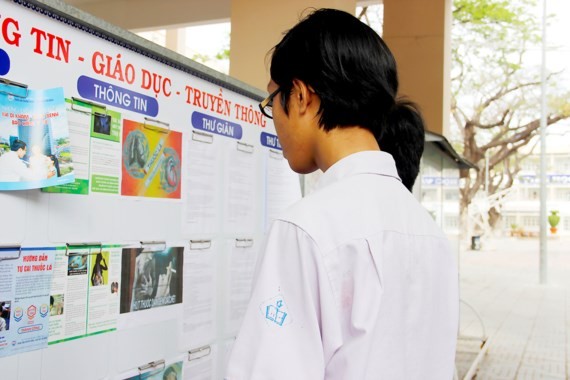
Though the smoking ban in public areas took effect on May, 2013, the rate of smokers and passive smokers has still maintained high.
Dr. Nguyen Tuan Lam from the World Health Organization said that around six million people die of related-tobacco diseases and 600,000 secondhand smoker die. Vietnam is one of 15 countries with most smokers. The Southeast Asian nation spent VND31 trillion on tobacco in 2015.
Tobacco is not only costly but key factor of diseases leading to death in the labor age of 30 to 69; consequently, families lost their breadwinners triggering to poverty. It is a problem that tobacco-related diseases are increasing; for instance, the rate of lung cancer is ten to twenty times higher; Coronary artery disease also surged by 10 – 15 times causing myocardial infarction or atherosclerosis is 1.5 to twice higher.
Additionally, tobacco acts as key factor to cause cerebral haemorrhage , chronic obstructive pulmonary disease; it deprives man of his sexual powers and increases the risk of infertility in both genders and of miscarriage in female. Worse, smoking is a known risk factor for stillbirth during pregnancy.
In 2015, total cost of treatment of related-tobacco diseases in Vietnam was over VND23 trillion ($1,012,616,092). Around 40,000 people die of related-tobacco disease annually in the country, four times the number of traffic accident death toll. Dr. Tuan Lam warned the number of people dying of tobacco-related disease will be 70,000 in 2030 without effective measures.
Dr. Vo Thi Bach Suong, lecture of Medicine University, said that smoke contains 7,000 chemicals including 69 ones causing cancer.
Despite of having smoking ban in public places, people still smoke. Dr. Phan Thi Hai, deputy head of the Ministry of Health’s Steering Committee on Smoking and Health said that tobacco costs cheaply in Vietnam compared to that in the world. Moreover, it is sold everywhere and people can buy it easily.
In Ho Chi Minh City, there have been many projects and programs to reduce the quantity of smokers such as non-smoking areas in 24 communes and wards; over 350 hotels and restaurants without smoking; 17 tourist destinations, eateries, karaoke bars, schools and hospitals saying no to smoking. Posters against smoking are put in public places. Yet these measures seemed not to be effective for a habit. Smokers in public places just receive warnings.
Dr. Trinh Van Hiep from the Department of Health’s Tobacco Harm Prevention Steering Committee said that there is a shortage of health inspectors, market managers, police officers and staffs of people’s committees who are responsible for issuing fines; therefore, no smokers have been fined so far.
Dr. Nguyen Tuan Lam from the World Health Organization said that around six million people die of related-tobacco diseases and 600,000 secondhand smoker die. Vietnam is one of 15 countries with most smokers. The Southeast Asian nation spent VND31 trillion on tobacco in 2015.
Tobacco is not only costly but key factor of diseases leading to death in the labor age of 30 to 69; consequently, families lost their breadwinners triggering to poverty. It is a problem that tobacco-related diseases are increasing; for instance, the rate of lung cancer is ten to twenty times higher; Coronary artery disease also surged by 10 – 15 times causing myocardial infarction or atherosclerosis is 1.5 to twice higher.
Additionally, tobacco acts as key factor to cause cerebral haemorrhage , chronic obstructive pulmonary disease; it deprives man of his sexual powers and increases the risk of infertility in both genders and of miscarriage in female. Worse, smoking is a known risk factor for stillbirth during pregnancy.
In 2015, total cost of treatment of related-tobacco diseases in Vietnam was over VND23 trillion ($1,012,616,092). Around 40,000 people die of related-tobacco disease annually in the country, four times the number of traffic accident death toll. Dr. Tuan Lam warned the number of people dying of tobacco-related disease will be 70,000 in 2030 without effective measures.
Dr. Vo Thi Bach Suong, lecture of Medicine University, said that smoke contains 7,000 chemicals including 69 ones causing cancer.
Despite of having smoking ban in public places, people still smoke. Dr. Phan Thi Hai, deputy head of the Ministry of Health’s Steering Committee on Smoking and Health said that tobacco costs cheaply in Vietnam compared to that in the world. Moreover, it is sold everywhere and people can buy it easily.
In Ho Chi Minh City, there have been many projects and programs to reduce the quantity of smokers such as non-smoking areas in 24 communes and wards; over 350 hotels and restaurants without smoking; 17 tourist destinations, eateries, karaoke bars, schools and hospitals saying no to smoking. Posters against smoking are put in public places. Yet these measures seemed not to be effective for a habit. Smokers in public places just receive warnings.
Dr. Trinh Van Hiep from the Department of Health’s Tobacco Harm Prevention Steering Committee said that there is a shortage of health inspectors, market managers, police officers and staffs of people’s committees who are responsible for issuing fines; therefore, no smokers have been fined so far.
The Ministry of Health’s Steering Committee on Smoking and Health will increase information of smoking ban in public places in hotels, restaurants and workplace.
Furthermore, the committee will propose the government and the National Assembly to raise tobacco tax.
Furthermore, the committee will propose the government and the National Assembly to raise tobacco tax.

